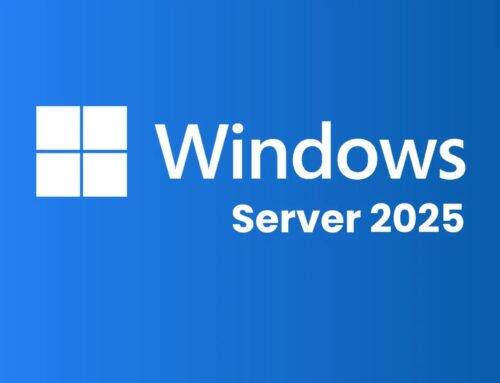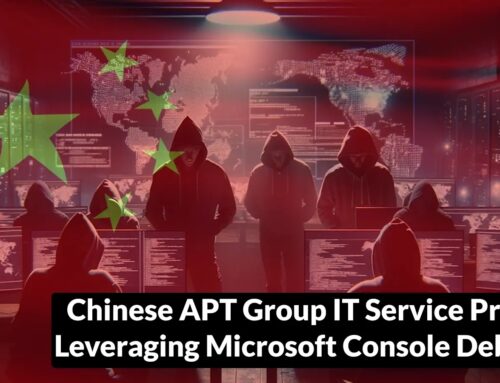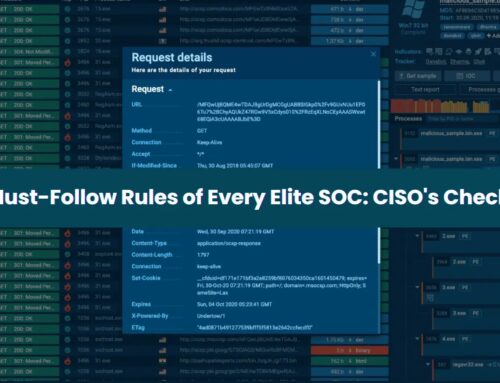
How Top CISOs Save Their SOCs from Alert Chaos to Never Miss Real Incidents
Streamlining SOC Operations: How Top CISOs Combat Alert Fatigue and Uncover Real Threats
In the relentless pursuit of robust security, many organizations invest heavily in an arsenal of tools. Yet, despite significant expenditure, Security Operations Centers (SOCs) frequently find themselves drowning in a deluge of alerts. This isn’t a symptom of insufficient technology; it’s a critical operational challenge where false positives obscure genuine threats, allowing stealthy attacks to slip through the cracks. Critical incidents get buried in the noise, leading to delayed responses and increased risk. Top CISOs understand that the solution isn’t simply adding more tools; it’s about empowering analysts with the speed and visibility to identify and neutralize real attacks before they inflict damage.
The Pervasive Problem of Alert Chaos
The core issue facing many SOCs is alert fatigue. Modern security tools, while powerful, often generate an overwhelming volume of notifications. Many of these are benign, misconfigurations, or low-priority events that consume valuable analyst time. This constant stream of non-actionable alerts desensitizes analysts, leading to a higher likelihood of legitimate threats being overlooked. The sheer volume makes it nearly impossible for humans to process everything effectively, fostering an environment where critical incidents masquerade as background noise.
Why More Tools Aren’t the Answer
The intuitive response to security gaps is often to acquire more security solutions. However, this fragmented approach frequently exacerbates the problem. Each new tool introduces its own set of alerts, its own management interface, and its own data silos. Instead of enhancing visibility, it creates a more complex, unwieldy ecosystem where correlation is difficult, and a holistic view of the threat landscape becomes elusive. This leads to increased operational overhead without a proportionate increase in security posture. The focus shifts from proactive threat hunting to reactive alert triage, often against a backdrop of alerts that are not indicative of true threats.
The CISO’s Mandate: Empowering Analysts for Proactive Defense
Leading CISOs recognize that the true bottleneck isn’t a lack of data, but a lack of actionable intelligence derived from it. Their strategy shifts from tool acquisition to analyst enablement. The goal is to provide SOC professionals with the context, correlation, and automation necessary to rapidly distinguish between noise and genuine indicators of compromise (IOCs). This involves optimizing existing toolsets, implementing intelligent automation, and fostering a culture of continuous improvement in incident response workflows.
Key Strategies Employed by Top CISOs
- Intelligent Alert Prioritization and Triage: Implementing advanced analytics and machine learning to score and prioritize alerts based on their potential impact and veracity. This moves beyond simple SIEM rules to contextual understanding.
- Automated Incident Response Playbooks: Developing and refining automated playbooks for common incident types. This allows for rapid initial containment and eliminates manual steps for repetitive tasks, freeing analysts for complex investigations.
- Enhanced Visibility and Context: Integrating data from various security tools and network telemetry into a centralized platform. This provides a holistic view, allowing analysts to correlate events across different layers of the IT environment and understand the full scope of an incident.
- Threat Intelligence Integration: Tightly integrating external and internal threat intelligence feeds to enrich alert data. This helps identify known bad indicators and understand the adversary’s tactics, techniques, and procedures (TTPs), as documented by frameworks like MITRE ATT&CK.
- Reducing False Positives at Source: Working with security engineers and vendors to fine-tune detection rules and configurations, reducing the volume of benign alerts generated by security tools themselves. This requires deep understanding of system behavior and expected baselines.
- Focus on Critical Assets: Prioritizing monitoring and alerting for critical business assets and sensitive data. Not all alerts are equal; those touching systems that are vital to business operations receive immediate attention.
- Effective Use of Security Orchestration, Automation, and Response (SOAR) Platforms: Leveraging SOAR technologies to centralize security operations, automate repetitive tasks, and orchestrate incident response workflows. This significantly accelerates investigation and remediation efforts.
Remediation Actions for a Healthier SOC
For organizations struggling with alert chaos, implementing a structured approach to SOC optimization is crucial. Here are actionable steps:
- Audit Existing Tooling and Workflows: Conduct a comprehensive review of all security tools, their configurations, and how alerts are processed. Identify redundancies and inefficiencies.
- Define Clear Alert Triage Procedures: Establish clear, documented processes for classifying, prioritizing, and escalating alerts. Ensure every analyst understands the criteria.
- Invest in Analyst Training: Equip your SOC team with the skills to effectively use advanced security tools, understand attack methodologies, and perform deep-dive investigations.
- Implement a SOAR Solution: If not already in place, evaluate and deploy a SOAR platform. Start with automating simple, high-volume tasks and progressively expand.
- Develop Strong Feedback Loops: Create mechanisms for analysts to provide feedback on alert quality, helping tune detection rules and reduce false positives over time.
- Focus on Data Normalization and Correlation: Work towards a unified data lake or SIEM where security event logs from disparate sources can be normalized and correlated effectively. This helps identify complex attack chains that might otherwise appear as isolated events.
For instance, an alert for a failed login (which might be relatively low risk on its own) combined with an alert for unusual user activity from an untrusted IP address and a subsequent alert for privileged account modification (CVE-2023-xxxx, for example, CVE-2023-45678 if it were a specific vulnerability involved, though unauthorized access might not always be a vulnerability) immediately elevates the risk significantly when correlated within a sophisticated SIEM/SOAR system.
The Path Forward: A Resilient, Proactive SOC
Top CISOs recognize that a truly effective SOC isn’t just about catching threats; it’s about operating with efficiency, precision, and minimal friction. By focusing on smart investments in automation, process optimization, and analyst empowerment, they transform their SOCs from reactive alert processing centers into proactive threat hunting powerhouses. This strategic shift not only saves significant resources but also ensures that when a genuine incident occurs, the SOC is prepared to respond swiftly and decisively, protecting the organization from severe damage.





